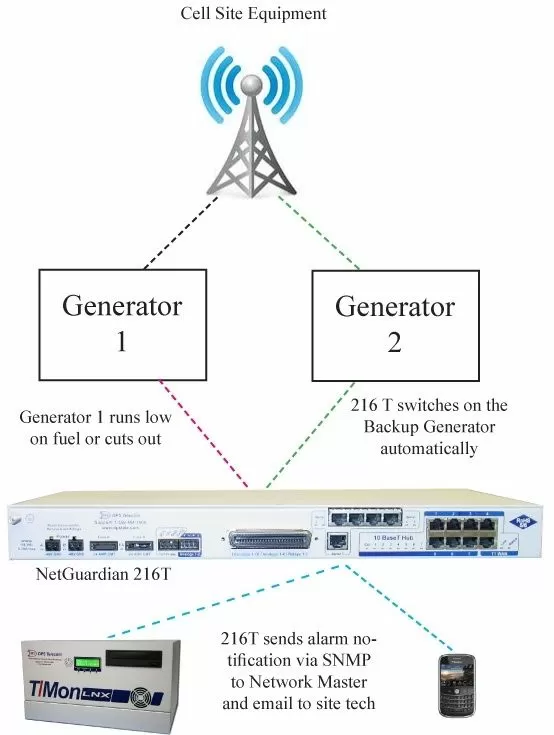Download our free Monitoring Fundamentals Tutorial.
An introduction to Monitoring Fundamentals strictly from the perspective of telecom network alarm management.
1-800-693-0351
Have a specific question? Ask our team of expert engineers and get a specific answer!
Sign up for the next DPS Factory Training!

Whether you're new to our equipment or you've used it for years, DPS factory training is the best way to get more from your monitoring.
Reserve Your Seat TodayKurt Klein is a cell-site technician for U.S. Cellular, a wireless service provider with 5.9 million customers.
"I wanted to be able to remotely control and reset the generators, and I wanted to be able to monitor everything I possibly could."
Klein monitors a propane generator powered cell site over 100 miles from his base of operations. "It's takes about three to four hours to get there, and it gets snowed in sometimes," he says. Travel time to the site made it essential that they find a way to prevent outages and long return-to-service times for clients.
Without monitoring the site, the best way to ensure that the site didn't go dark was to have a redundant generator running at all times. "We didn't want the two generators out there running continuously," he says. Running both generators cost fuel, and still didn't provide means to report failures or prevent regular truck rolls to the site. So Klein went looking for an RTU to solve the problem. "I wanted to be able to remotely control and reset the generators, and I wanted to be able to monitor everything I possibly could."
However, Klein's site didn't have LAN access, so he was looking for an RTU that supported the site's T1 transport natively while still providing the analog monitoring features he was looking to keep tabs on his generators.
"I have the 216T programmed to page me if there's a problem, and we send SNMP alarms to our network master."
Klein and U.S. Cellular found a solution in the NetGuardian 216T with a Rochester Propane Sensor to handle the generators. With the propane sensor and the 216T, Klein can set the backup generator set to come on only if the primary fails or reaches critical fuel. The 216T also supports the site's T1 transport, which made Klein happy. "I liked that I didn't need a separate router to use it."

Visibility without Staring at a Terminal
With the NetGuardian, Klein can keep aware of what's going on at his site without having to wait for a problem to arise or schedule regular truck rolls. "I have the 216T programmed to page me if there's a problem, and we send SNMP alarms to our network master." The 216T's web interface also allows Klein to check the fuel gauges, see the status of his generators, and operate the control relays to switch generators and other equipment on or off. With the 216T, he has visibility and control at the site without having to drive out to it.
Klein has the unit setup for multiple notifications for ultimate visibility and peace of mind, eliminating the need for frequent visits to the site. "Actually, I have it setup to email the propane company when the generators get low, so they just go out and fill them up for us."